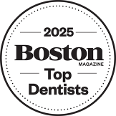The Advantage of Invisalign Teen®
July 27th, 2016

Many teens want to improve their smile without the pain and embarrassment of having to wear metal braces. Just like metal braces, Invisalign works by gently moving teeth into position. Metal braces are worn continuously, however, and need to be adjusted by Drs. Cartsos and Zavras regularly in order to move the teeth into proper position.
Invisalign uses a series of clear trays to move teeth into position. When you are done with one tray, simply pop in the next! Invisalign Teen straightens teeth just as well as traditional metal braces, but has several advantages.
Invisible
You’ve probably figured out the most obvious advantage already: the aligners are nearly invisible. Invisalign works by using a series of clear aligners that should be worn 20 to 22 hours a day. Invisalign trays are almost undetectable when you wear them, so you can smile with confidence — even while you are straightening your teeth.
Removable
One of the best things about Invisalign Teen is that the trays are removable. This means you can remove your tray to eat, brush, and floss your teeth, or even to play sports. While Drs. Cartsos and Zavras and our team at Convivial Dental require you to wear the trays for most of the day, having the ability to remove your straightening trays means you have practically none of the dietary restrictions that metal brace wearers have to observe.
Teens that play contact sports often experience difficulties with metal braces. Invisalign Teen allows the flexibility to wear a mouthguard, and no metal wires or brackets means less risk of cuts or other injuries while playing a game. Musicians also benefit from being able to remove their trays during rehearsals and performances. You can even remove your tray for your school photo or to snap a quick selfie!
Finally, because you can remove your aligners, you can easily keep your teeth clean through normal brushing and flossing. You can also clean your trays by brushing and rinsing them in warm water. Brushing and flossing with metal braces can be frustrating and time-consuming. Invisalign Teen treatment at Convivial Dental helps you keep your smile white and shiny with very little change to your normal routine.
To learn more about Invisalign Teen, or to schedule an appointment with Drs. Cartsos and Zavras, please give us a call at our convenient Chestnut Hill, Massachusetts office!










